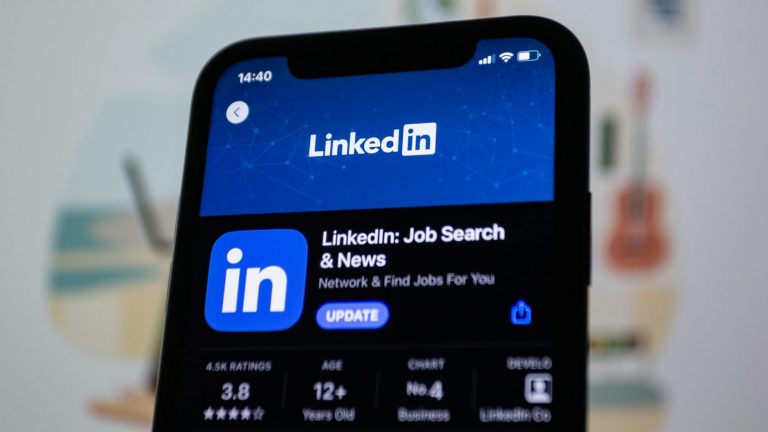
The Modern Career Dilemma: Freedom or Security?
Did you know that nearly 60 million Americans performed some freelance work in 2024, representing 36% of the entire U.S. workforce? As traditional employment models continue to evolve, professionals across industries face a critical question: should you pursue the stability of a full-time job or embrace the flexibility of freelancing?
This career crossroads isn’t just about how you earn money—it’s about how you structure your life, manage your time, and build your professional future. Whether you’re a recent graduate planning your career path, a professional considering a major change, or someone seeking better work-life balance, understanding the fundamental differences between these two options is essential.
In this comprehensive guide, we’ll explore the key aspects of both freelancing and full-time employment, helping you determine which path aligns best with your unique goals, lifestyle preferences, and financial needs.
Understanding the Core Differences
What Defines Freelancing?
Freelancing represents a work arrangement where individuals offer specific services to multiple clients rather than committing exclusively to one employer. As an independent contractor, you:
- Set your own rates and working schedule
- Choose which projects and clients to work with
- Handle your own taxes, benefits, and business operations
- Take responsibility for finding new work opportunities
This self-directed approach has grown exponentially with the rise of digital platforms, remote work technologies, and changing attitudes toward flexible careers.
What Constitutes Full-Time Employment?
Full-time employment typically involves working for a single organization under a structured agreement that includes:
- Regular, predictable working hours (often 40 hours per week)
- Employer-provided benefits like health insurance and retirement plans
- Job security provisions and potential advancement paths
- Clear reporting relationships and organizational integration
Despite workplace evolutions, this traditional employment model remains the cornerstone of many industries and career paths.
Financial Considerations: Income, Benefits, and Security
Income Potential and Stability
Full-Time Employment:
- Provides predictable, regular paychecks
- Offers salary increases through raises and promotions
- Includes overtime pay in many positions
- Creates financial stability for budgeting and planning
Freelancing:
- Can potentially yield higher hourly/project rates
- Allows for scaling income by taking on more work
- Creates variable earnings that fluctuate with workload
- Requires managing “feast or famine” income cycles
According to the Freelancers Union, experienced freelancers in specialized fields often earn 20-40% more per hour than their traditionally employed counterparts—but this comes with significant income volatility.
Benefits Package Comparison
Full-Time Benefits:
- Employer-subsidized health insurance
- Paid time off (vacation, sick leave, holidays)
- Retirement plans with potential matching contributions
- Life and disability insurance options
- Professional development opportunities
Freelance Considerations:
- Self-funded healthcare coverage
- No paid time off or vacation days
- Self-directed retirement planning
- Complete responsibility for insurance coverage
- Tax-deductible business expenses
The financial value of a comprehensive benefits package in full-time employment can represent 25-40% of total compensation—a significant factor often overlooked when comparing base pay rates.
Lifestyle and Work Environment Factors
Scheduling Flexibility and Work-Life Balance
The Freelance Advantage:
- Complete control over working hours
- Ability to design your ideal workday
- Freedom to take time off when needed
- Option to work from any location
- Potential to balance multiple life priorities
The Full-Time Structure:
- Predictable, consistent schedule
- Clear separation between work and personal life
- Protected time off through vacation policies
- Structured workday with defined expectations
- Social connections with coworkers
Research shows that 84% of freelancers report better work-life balance compared to their previous traditional employment—though this often requires excellent time management skills.
Professional Development and Growth
Career Advancement in Traditional Employment:
- Clear promotion pathways
- Access to internal training programs
- Mentorship opportunities within the organization
- Company-funded professional development
- Leadership development through team roles
Skill Growth in Freelancing:
- Diverse project experiences across clients
- Constant adaptation to new challenges
- Development of business management abilities
- Direct client feedback and market validation
- Personalized learning path based on interests
Each approach develops different professional capacities: traditional employment often builds deep institutional knowledge and leadership skills, while freelancing tends to foster adaptability, client management expertise, and entrepreneurial capabilities.
Making the Decision: Key Factors to Consider
Personal Traits and Working Style
Certain personality traits and working preferences tend to align better with each career path:
Freelancing Might Be Right If You:
- Value autonomy and independence
- Thrive with varied work and diverse challenges
- Have strong self-discipline and time management skills
- Enjoy business development and client relationships
- Adapt well to uncertainty and changing circumstances
Full-Time Employment Might Suit You If You:
- Prefer clear structure and guidance
- Value team collaboration and social workplace connections
- Appreciate predictability and stability
- Want to focus on specialized skills without business management
- Benefit from external accountability and deadlines
Industry-Specific Considerations
The viability of freelancing versus full-time work varies significantly across professions:
Fields Where Freelancing Thrives:
- Creative services (writing, design, photography)
- Software development and IT services
- Digital marketing and social media management
- Consulting and business advisory
- Content creation and production
Industries Where Traditional Employment Dominates:
- Healthcare and medicine
- Education and academia
- Manufacturing and production
- Public service and government
- Traditional finance and banking
According to labor market analysts, technology, creative, and knowledge-based sectors offer the most robust freelance opportunities, while regulated industries and those requiring physical presence tend to favor traditional employment models.
Hybrid Approaches: Best of Both Worlds?
The binary choice between freelancing and full-time work is increasingly giving way to hybrid approaches that blend elements of both:
- Side Hustles: Maintaining full-time employment while developing freelance work in specific areas
- Portfolio Careers: Combining part-time employment with freelance projects
- Contract-to-Hire: Starting relationships as a freelancer before transitioning to employment
- Intrapreneurship: Finding entrepreneurial opportunities within traditional organizations
- Remote Work: Accessing location independence within full-time roles
These hybrid models allow professionals to customize their career approach, potentially capturing benefits from both traditional and independent work structures.
Practical Transition Strategies
If you’re considering a shift between freelancing and full-time employment, a strategic approach can minimize risks:
Moving from Employment to Freelancing:
- Build savings to cover 6-12 months of expenses
- Develop a client network before leaving your job
- Start with part-time freelancing to test viability
- Create systems for taxes, contracts, and business operations
- Research healthcare and benefits options thoroughly
Transitioning from Freelancing to Employment:
- Update your resume to highlight relevant project achievements
- Emphasize transferable skills like client management and self-direction
- Address potential employer concerns about organizational fit
- Prepare to explain your freelance experience in employment-relevant terms
- Network with former clients who might provide employment opportunities
Conclusion: Making Your Personal Career Choice
The “better” career path ultimately depends on your unique combination of:
- Financial priorities and risk tolerance
- Desired lifestyle and schedule flexibility
- Career advancement goals and professional development needs
- Personal working style and motivation patterns
- Life stage and family considerations
Rather than viewing freelancing and full-time employment as permanent choices, consider them as different tools in your career toolkit—options that might serve you better at different phases of your professional journey.
The modern work landscape increasingly allows for movement between these paths, with many professionals experiencing both modes throughout their careers. By understanding the fundamental trade-offs and aligning your choice with your current priorities, you can make an informed decision that supports both your immediate needs and long-term aspirations.
Frequently Asked Questions
Can I earn more money as a freelancer than in a full-time job?
While freelancers often command higher hourly rates than employees in similar roles, total compensation depends on factors including utilization rate, business expenses, and benefits. Many successful freelancers outpace salaried counterparts by 20-40%, but this requires consistent client acquisition and efficient business management.
How do I handle healthcare insurance as a freelancer?
Freelancers typically access healthcare through individual marketplace plans, professional association group plans, spouse/partner coverage, or health share programs. The Affordable Care Act ensures access regardless of employment status, though costs are often higher without employer subsidies.
Which option offers better tax advantages?
Freelancers can deduct legitimate business expenses, including home office, equipment, software, travel, and professional development. However, they also pay self-employment tax covering both employer and employee portions of Social Security and Medicare contributions. Full-time employees have fewer deductions but share tax burden with employers.
Is it possible to freelance in traditionally employment-focused industries?
Yes, though with varying degrees of difficulty. Even in fields like healthcare and education, freelance opportunities exist in areas like telehealth consulting, curriculum development, and specialized services. Research specific niches within your industry where independent contractors are already succeeding.
How does freelancing impact work-life balance?
Freelancing offers greater control over when and where you work, but often requires more discipline to maintain boundaries. Without external structure, many freelancers report working more hours than employed counterparts but with greater flexibility in how those hours are distributed throughout the day and week.














